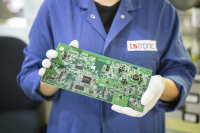Welding with safety equipment is fundamental for the health and well-being of any specialist. That's why we've prepared four quick tips on how to weld with the right equipment can make all the difference. See then, some tips on how to use such equipment with maximum safety and productivity:
1 | Safety First

First and the most important position on this list. It is essential to prioritize equipment that will protect the person who is the key part of the job, especially those that avoid direct contact of the specialist with dangerous welding fumes - masks and gloves are essential, but proper welding jackets and boots also play an important role. Have a look at the prices from an online store: https://www.weldingsuperstore.com.au/welding-jackets/ Welding apparel is not that expensive at all.
2 | Define the right equipment for each type of welding

Industrial processes involve a wide variety of welding options (such as metals, electrodes, and consumables, for example), which vary according to the factory's procedure.
Whether MIG / MAG or TIG, the definition of the type of welding will require and vary the specific equipment for each need.
Therefore, the first step to ensure performance is to define the welding process to adopt a particular welding machine for each need.
3 | Combine welds, parts, and fluxes

Defining the welding process will depend on the part to be welded, where the combination of flows also impacts the quality and the result of the project.
Choosing first-rate machines, with certifications and measurements, and using support equipment, contribute to perfect welding. It sounds cliché, but it is worth remembering that paying attention to cleaning the surfaces to be welded and following the manufacturer's recommendations are simple actions that will reflect on the performance and optimization of what is being produced.
4 | A melter or a welder?

A common misconception in industries is to appoint professionals with low or no training. That's because there is a giant difference between a person who just melts electrodes and another who welds with professionalism. Neat and clean welds are very important not only for purely aesthetic reasons.
Thus, qualifying the workforce with training and qualifications and educating the professional about technological advances in the category are indispensable actions for the sector that is already undergoing digital transformations.
When a welder has the necessary skills and starts to see his functions as a true expert on how his work is impacting, factors such as quality, precision and resistance are aspects that he will take into account when welding.
In this way, it is clear how much safety and specialization go together and are significant tools that impact both the industry's progress and the development of the welder, which together form the success of the sector.








